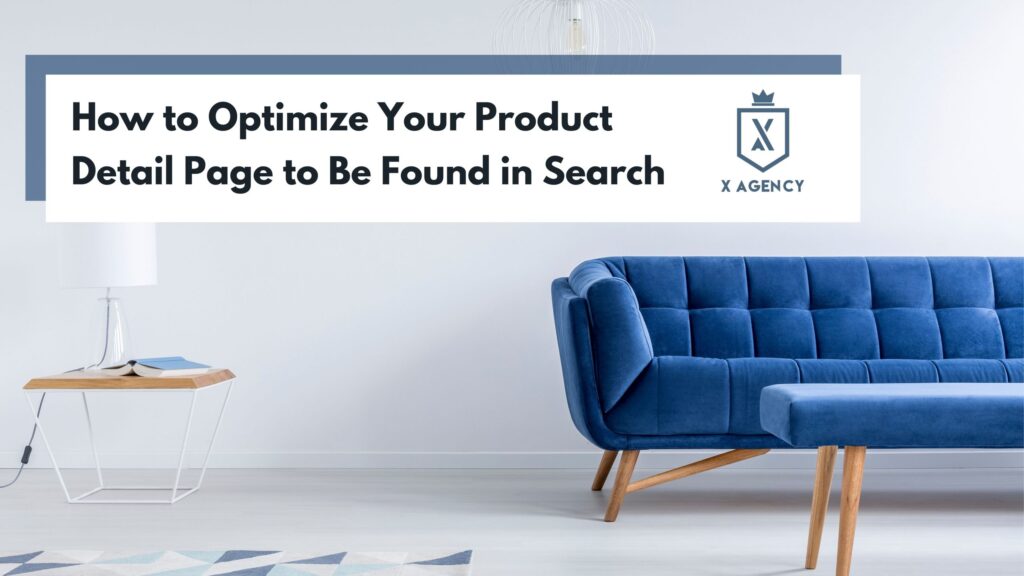How to Optimize Your Product Detail Page to Be Found in Search
We know, the temptation to drop that manufacturer’s product description into your product feed and call it a day is real. However, creating useful, unique, optimized product pages is an asset to both your paid and organic digital marketing strategies.
Not only will shoppers find pertinent, and dare I say branded, information about your products on a well crafted product detail page—which could very well lead to a purchase—the well crafted product listing could be what pulls the shopper to your site in the first place.
The way you list your products has a major impact on how your products rank organically on search engine results pages (SERPs) as well as how well your product feed performs in Google Shopping, display ad networks and more.

Everything You Need To Know For a Profitable Product Listing
Here’s the breakdown of your product listing page, tips to optimize the page and even product listing templates for each section that you can implement within your own product catalogue.
Tip: Consistency is Efficiency — Each section of your product listing page should have a “formula” that is emulated for every product in your feed to create uniformity. Following a pattern will make optimization much easier.
Visual On-Page Elements Of A Product Detail Page
1. Product Title
Your product title is your product name with potentially a little bit of a description appended to the name. This should be the h1 tag on your page, and also set as part of the Page Title.
Best case scenario, start by defining what a user would search for when looking for a product like yours; this is your target keyword. Once you have specified this, incorporate it into your product title along with a defining feature (optional). For example, if your product is called the “Bradley Sofa,” the target keyword you defined is “velvet sofa,” and a defining feature is that the product is blue. Your product title should be “Bradley Blue Velvet Sofa.”
Including the defining feature is especially useful if your brand names products in a way that is more abstract than directly related to the utility of the product. For example, if you make bath bombs and the name of a particular style is “Rosebud,” listing the product as “Rosebud Bath Bomb” will give you a wider net of non-branded keywords that you can rank for in search.
Optimal Length: 55 characters
Product Title Template: Product Name + Defining Feature (optional) + Target Keyword
2. Product Description
The first section of content beyond the heading on your page, a product description is your opportunity to share details about the product in a way that the customer can truly imagine themselves using the product. Use descriptive language that highlights its distinctive values and how it solves the problem or desire the shopper was looking to fulfill.
In this section, naturally include your target keywords to help your product listing page rank against competitors in search.
For example, “The Bradley Blue Velvet Sofa from the Modern and Contemporary Collection displays how comfort and style can both be found in your living room couch. The timeless cobalt blue velvet couch is sure to make a statement that you will never get tired of. Find this statement couch at home in your sitting room, formal living room, or even in your master suite. The curved back design and premium velvet give a soft feel while supporting your posture and back, meaning you can enjoy this sofa all day long.”
Optimal Length: 300 – 400 words
Description Template: Product Title + Description + Value Product Gives Customer
3. Product Info
Also known as product details, fill this section with a list of relevant specifications such as sizing, dimensions, material type, ingredients, etc. Make sure the customer has access to all product information and a way to contact your company with questions.
If a shopper’s question about your product is not answered quickly, they are likely to go to a different website to make the purchase. For example, “35 inches high x 80 inches wide, Frame constructed with locally-sourced reclaimed wood, Upholstered with Cobalt Blue Velvet, For help call (XXX) XXX-XXXX.”
Product Info Template: Size/Dimension + Color + Material/Ingredients + Company Contact
(display each on a separate line)
4. Images
You should include multiple images on your product detail page. Feature clean product shots on a simple background, as well as a lifestyle shot of the product in use. If you’re listing clothing, we recommend showing the item in models of different sizes so that shoppers can see how the time fits.


Technical On-Page Elements of A Product Detail Page
1. Page Title
As with any web page, the page title directly impacts your rankings in search. It is also shown as the title of the listing on a SERP, so it also impacts your click thru rate from search pages.
Here, add your product title so users know if this is the product they are looking for, your brand name for awareness, and a relevant value-add your brand brings or another top target keyword. For example, “Bradley Blue Velvet Sofa| Living Room Couch | Home Decor Inc. ”
By including high value, relevant and winnable terms in your Page Titles, the probability of ranking in top spots on organic SERPs is greater. The value of these ranking pages is found when you rank highly converting pages for relevant search terms with high search volume trends.
By also having an enticing meta description (see below) and other SERP features like product reviews and pricing through schema markup, you can increase your click through rate, pulling in qualified traffic that will lead to more conversions.
Optimal Length: 60 characters
Page Title Template: Product Title | Secondary Keyword | Brand Name
2. Meta Description
This is the short description under your page title on SERPs. Here you want to be persuasive, naturally include keywords, include a call to action, and highlight the product offering and brand name behind it.
While the meta description does not directly impact your keyword rankings, a well crafted description will generate high click through rates and low bounce rates. Aka, sends more qualified traffic to your page, which signals page value to search engines and impacts rankings.
For example, “Bradley Blue Velvet Sofa features a modern and contemporary style sure to upgrade your living space. The best selling cobalt blue color provides a versatile and timeless look. Shop today and enjoy free shipping and a free 60-day trial.”
Optimal Length: 160 characters, 2-3 sentences
Meta Description Template: Product Description + Call to Action + What Your Brand Offers
3. Images
In addition to the visual side of images, they are also a useful SEO element on your page via the image file name and the Alt text. Both should be relevant to the image (no IMG50348) as well as the product title.
Take advantage of Alt text by including a short description of each of your images. Not only does this feature show the image description if the image doesn’t load, it is also an additional text element search crawlers read and attribute as keyword signals of the content on your web page.
Your image file name and Alt text can be similar, or even the same. Since you want to avoid spaces and include dashes in file names, simply take those out when writing it as Alt text. For example, the file name “Bradley-Blue-Velvet-Sofa-In-Living-Room” becomes “Bradley Blue Velvet Sofa In Living Room” as the Alt text.
Image Title Template: Product Title + Relevant Feature of Image
Alt Text Template: Product Title Relevant Feature of Image Additional Image Info (optional)
4. Breadcrumbs
Breadcrumbs are typically at the top of the page, and they show the shopper the different pages they clicked through to get to where they are on the site. Sound like a Hansel and Gretel reference to you, too?
This mini navigation bar allows users to easily go back up the path they came within the experience of your website. For example, once on your Bradley Blue Velvet Sofa page, the shopper may decide they’re looking for a different style couch. Instead of clicking the back button on their web browser to hopefully find the correct page, they can just click the category in the breadcrumb.
This feature should also be included as an easy add on within your eCommerce platform.
5. Product URL
Make your product URLs simple and relevant. They should be easily readable by humans and set to populate based off of your product page (no /page/30934805). Your eCommerce platform should have a setting that easily allows for URLs to automatically build themselves in this way.
If your site has a number of categories, and even subcategories, you should also include those in the URL structure. Similar to the breadcrumbs that are on the product page.
For example, “www.homedecor.com/living-furniture/couches/bradley-blue-velvet-sofa ” Follow a pattern to keep all product listing URLs in the same format.
URL Template: Website.com/category/subcategory/product-title
Tip: Remember to Update - Monitor your page rankings to be sure you’re moving to or staying at the top of the page. If you start to see a page slipping in rankings, you can run a competitor analysis to see if new search trends are bringing more traffic to relevant products.
